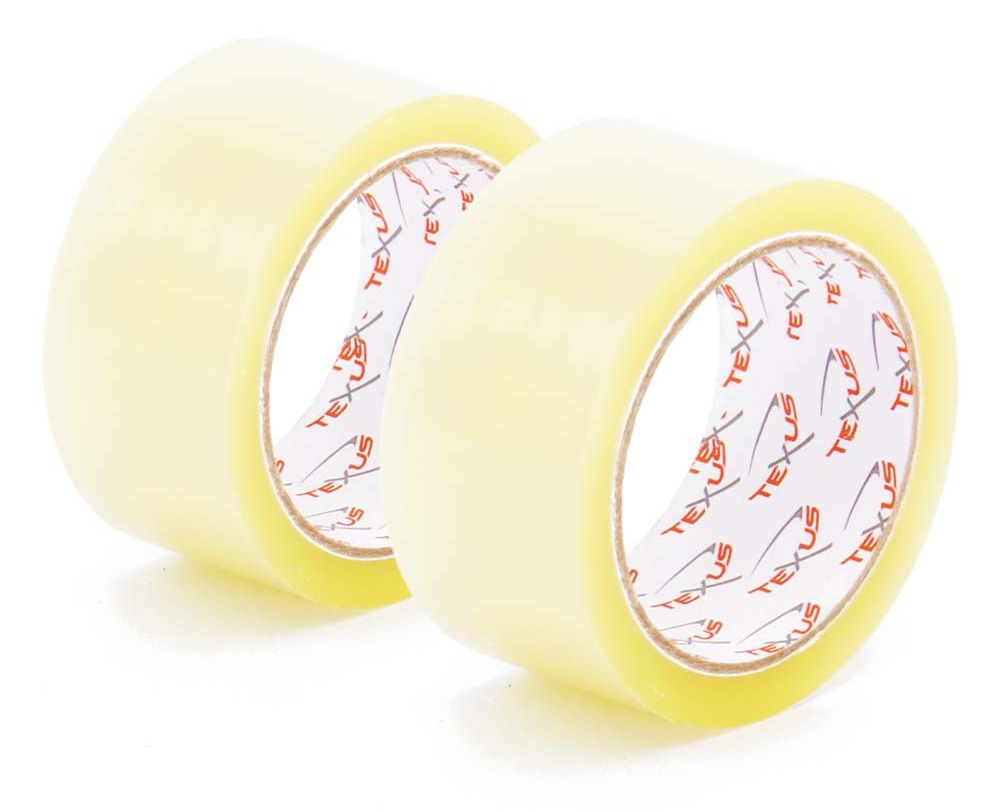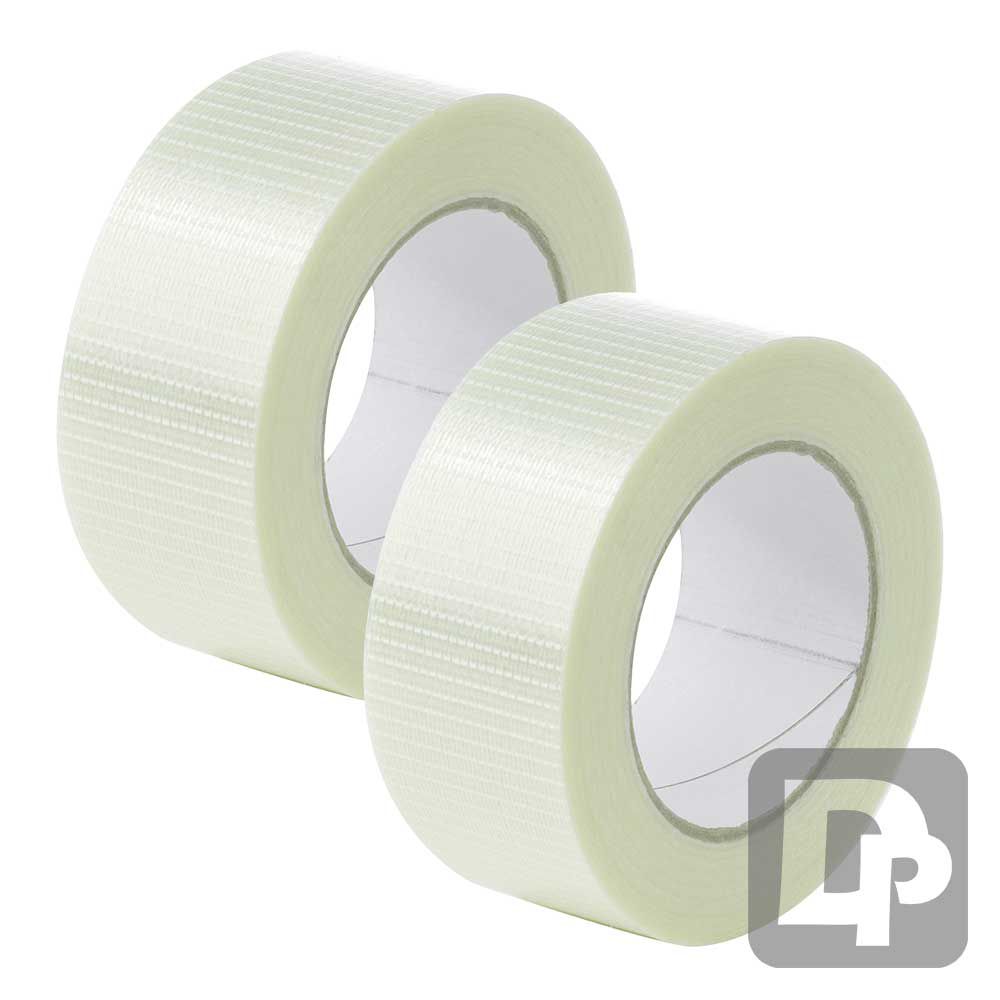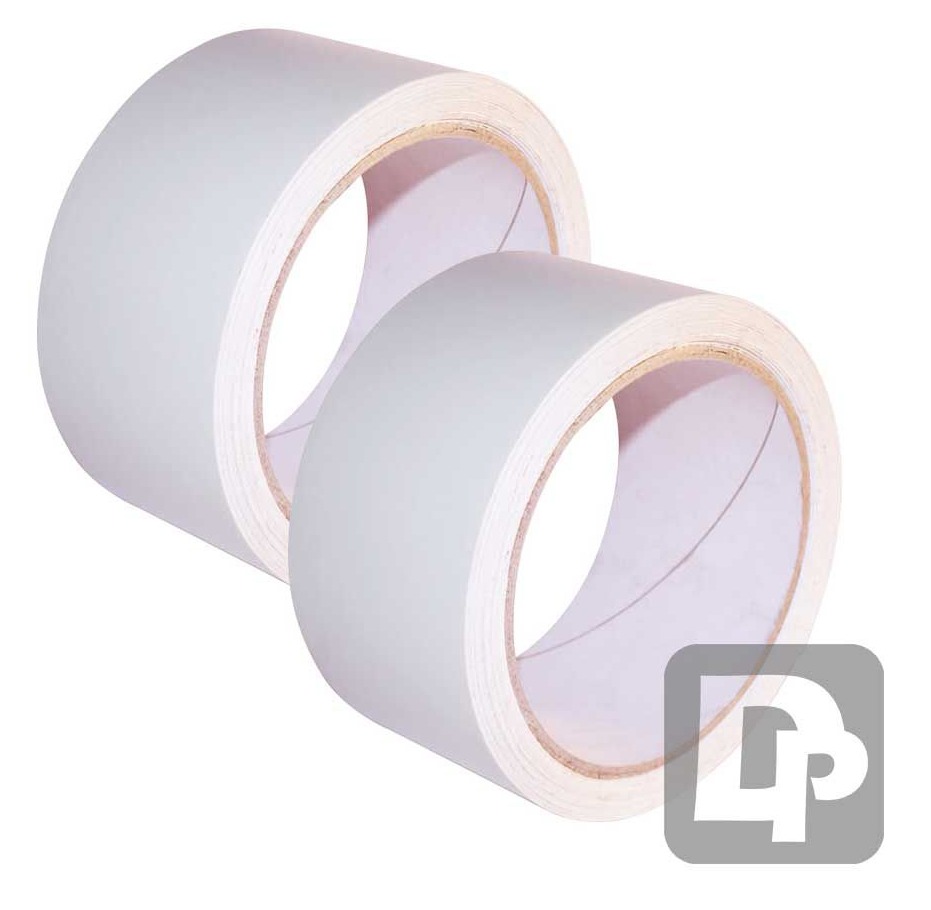HOW TO WORK OUT WHICH PACKING TAPE IS BEST FOR YOU
With so many different packing tape options all at different pricing levels it’s difficult to know which option will do the job you need it to do without overpaying. Here we explain the main packing tape types and unravel some of the mystery behind why some are more expensive than others.
Packing Tape Types Explained
Packing tapes are made up of two components; a backing material that gives the strength, and the adhesive that sticks to what you need it to stick to. Different packaging tape types have different types and quality of materials in these two areas. Here’s a rundown on the most popular types split into backing material and adhesive types.
Packing Tape Backing Material Types
The backing material is the material that makes up the bulk of the packing tape. It's the plastic or paper bit that acts as a carrier for the adhesive and provides the strength of the tape. Different backing types perform differently and some are stronger than others so it's important to understand the differences.
Polyprop (Polypropylene) Tape
Polyprop tape refers to the backing material type. This is manufactured from polypropylene (PP) which is a plastic similar to the plastic used for bottle caps. It is a strong cost-effective material that is widely used for cheaper tapes. Polyprop does tend to be brittle though, so can tear easily if it is punctured or cut, and you can usually recognise it by its shiny high gloss finish. This backing type is the most popular of all backing types because it does a good job at a low cost. However, it is not particularly strong so it may break or tear if put under pressure, and the rolls tend to be easily damaged when being used in a busy warehouse environment.
Vinyl Tape
Vinyl is another backing material type and is considered stronger and more tear resistant than polyprop. It is manufactured from polyvinyl chloride (PVC) which although a very useful material, does have an adverse environmental impact during its manufacturing process. Vinyl tape is recognised by its duller appearance and softer feel, and often classed as a premium tape chosen by those that are experiencing tearing issues with polyprop tape. PVC is great for busy warehouse environments because its durable nature helps to keep wastage from damaged rolls to a minimum.
Polyester Tape
Polyester tape is another plastic tape type that is manufactured from polyethylene terephthalate (PET). It is extremely durable, tear resistant, and strong, so often used for exporting and packing heavy items. Polyester tape tends to be more expensive, so although it is a premium tape product, expect to pay a bit more. It is also a bit tricky when it comes to recycling PET tape, it is not a particularly widely recycled material so may not find its way into the recycling stream at the end of its life. However, it’s great at doing its job, so if you need a strong durable tape then you need polyester tape.
Cello Tape
Cello tape is made using cellophane which is a polymeric cellulose film manufactured from cellulose produced from wood, cotton, hemp, or other sources. Because it uses renewable sources it is eco-friendlier than oil-based plastic tapes but the myth that it is biodegradable is not true. Unfortunately, cellulose plastic does not quickly degrade back into nature and is just as bad as oil-based plastic waste. Cello tape is strong and durable but tends to cost more because of its more expensive manufacturing process. However, if paper tape doesn’t work for you, then Cello tape is one of the most environmentally sustainable plastic tapes on the market.
Paper Tape
The ultimate eco-friendly tape product is packing tape manufactured from paper. Paper tape is a great option for showing customers you care for the environment. With its natural matt finish, it matches cardboard boxes well and gives a professional and tidy look to parcels. Paper isn’t resistant to tearing like plastic is, so paper tape does tend to tear easier. To combat this, paper tape often has reinforcing threads running through it. With these threads, paper tape becomes one of the strongest and durable tape options on the market. Because of its relatively rigid nature, paper tape isn’t particularly good at taping polythene or plastics. It doesn’t flex and follow contours quite as well as plastic leading to peel off and creasing.
Packing Tape Adhesive Types
The adhesive that is the glue that makes the packing tape sticky is just as, if not more important, than the backing material. This is what makes the packing tape sticky and makes sure the packing tape stays firmly stuck to your parcels. Here we explore some of the popular types of packing tape adhesive and their pros & cons.
Acrylic Adhesive Tape
Acrylic adhesive packing tape is generally used as a budget packing tape adhesive. It is cheap to manufacture and uses less harmful chemicals. Acrylic adhesive is very popular for short term applications like packing online orders, sealing boxes for overnight shipments, and taping bubble wrap and polythene. It is limited to short term application though as acrylic adhesive tends to dry out and loose it’s tack quicker than other adhesives. There are premium acrylic adhesives that last much longer though, and these are becoming more popular because of their environmentally friendly qualities over against other adhesive types.
Hot Melt Adhesive Tape
Hot Melt adhesive is a rubber-based adhesive which is melted and applied hot, then cooled to form an adhesive layer on the tape. Hot melt adhesive is a longer lasting adhesive which is not affected by moisture as much as acrylic adhesive. However, hot melt is not as good in temperature extremes, in very cold environments the adhesive hardens and loses its tack, and in hot environments the glue melts and becomes very soft so can be easily peeled off. If you use your tape in moderate temperatures, expect a higher tack and longer lasting grab than acrylic adhesive.
Solvent Adhesive Tape
Solvent adhesive tape is the high-performance option that withstands temperature extremes much better than the other two adhesive types. It is a solvent/polymer mix which cures during manufacture to give a durable and long-lasting adhesive, and is often used on stronger backing types like vinyl and polyester to give a high-performance tape. This adhesive is often used in cold stores and freezer storage applications because of its resistance to cold, and in export applications where moisture and temperature fluctuations are often an issue.
Gum Adhesive Tape
Gum adhesive is a water activated starch-based adhesive that needs to be activated by water before use. The water then ‘sets’ the adhesive and when dried forms a strong seal. Because the glue is wet, gum adhesive is most suited to sealing paper or cardboard boxes where it soaks into the fibres giving a high security tamper proof seal. Often used on paper tape it gives one of the most environmentally friendly taping products on the market, being recyclable and biodegradable, as well as using renewable sources like plants in the manufacturing process.
So which is the best packing tape for you?
Have you managed to work out which tape is the best for your application? If not, here’s a few examples of the different packing tapes in action, you may get some ideas here.
The best packing tape for packing online orders
Paper tape is an ideal opportunity for an online store to reinforce its environmentally friendly message to their customers. It’s a low cost, easy to use option that can be used to seal cardboard boxes, paper mailing bags, cardboard envelopes, and postal mailing wraps. Smaller online stores often find a self-adhesive paper tape is the best option, and larger online stores mainly opt for a gummed paper tape with an automatic dispenser. Both options look very smart and classy, much more appealing than a plastic tape.
The best packing tape for taping bubble wrap or foam protection
If you are taping up large amounts of bubble wrap or foam sheeting you are most likely going to be using quite a lot of tape. It doesn’t need to be particularly strong for this application and most adhesives stick well to plastics that are used for making bubble and foam. This means you can use a cheap polyprop tape with a cost-effective acrylic adhesive to help you keep your costs as low as possible.
The best packing tape for bundling timber or metal profiles
If you are needing to bundle items together in a pack, you need a strong bundling tape that you can stretch a little bit to hold the bundle together. Vinyl and polyester tapes are great for this as the material has a certain amount of elastic memory as well as being very strong. You want to steer away from polyprop tape as this doesn’t stretch and it more brittle leading to lose bundles. You’ll also want to choose a strong adhesive like solvent adhesive that will grab and hold for longer periods of time under tension.
How to work out which Packing Tape is best for you